日本だと
盲腸炎にかかると
治療費は
どれほどでしょう。
検索すると、
「虫垂炎ナビ」というサイトで、
次のようなデータが
入手できました。
9日入院して、
国民健康保険にて、
3割負担で支払総額は96,721円だったとのことです。
☆ 記事URL:http://www.appeope.com/%E5%8C%BB%E7%99%82%E8%B2%BB%E3%81%AF%EF%BC%9F%E7%9B%B2%E8%85%B8%E3%81%A7%E5%85%A5%E9%99%A2%E3%81%97%E3%81%A6%E6%89%8B%E8%A1%93%E3%81%97%E3%81%9F%E8%B2%BB%E7%94%A8%E3%80%80/
この数値、
頭に叩き込んでおいて下さいね。
次に、アメリカは
どうなのかを調べます。
なぜ、こんな比較をするかと言うと、
―― TPPで日本の医療費は100倍に!患者の弱みにつけこむアメリカ式医療の現実http://www.rui.jp/ruinet.html?i=200&c=400&m=273723&g=121203 …――
という僕自身がした引用ツイート故です(リンク)。
「全くのデマ!」
と決めつけられた方が
いました。
想像だけの
「ここも民営化しているが100倍になった医療費は全く無い!保険会社が医者が余計な薬や手術をしない様にカルテを監視しているからね。余計な事をやると払わないで医師の自己負担になる!」
という理由が
書き連ねてありました(リンク)。
アカウントの
プロフィールによると、
――菅野茂@kannokanno1
現代音楽の作曲家・指揮者。同じ本人のアイコンと名前を使った外科医の偽アカウントに注意しましょう!
ドイツのボンの近く。 · kan-no.rakurakuhp.com ――
となってました。
「外科医の偽アカウントに注意」
ということは、
この人は、
外科医として本物なのでしょうか???
でも、
気色悪い方です。
百歩譲って、
ドイツではそうなのかもしれません。
しかし、話題になっているのは
アメリカです。
その辺りの認識が
いい加減なんですな。
僕が
ツイートした内容は、
「るいネット」の記事です。
他人が
書いたものだという
逃げが打てます。
また、
元記事の執筆者が
「アメリカの医療費は、
日本の自己負担の100倍の金がかかる気がします」
という柔らかい表現の上、
「感覚的に」という前置きまでされています。
だから、感覚の問題で
対立を回避しようと思えば、
回避できました。
しかし、それでは、この記事に書かれてあった
「今、TPPで「日本の医療保険制度」破壊が問題になっています。アメリカの医療費が高いのは、“医療を金もうけのネタ”にしているからですね。日本の医療機関は営利事業は禁止され、ある意味、“国家統制”による“公サービス”となっています。それで、“原価”ベースの医療が提供され、それに“相互扶助”の保険制度で、個人負担軽減が図られ、公平で安価な自己負担額を実現しています」
という、
日本のかの国との違いが
どっか宙に飛んでしまいかねません。
せっかく引用させて頂いたのに、
それでは申し訳ないです。
相手にする
必要もないのでしょうけど、
コメントした人が
医師という
肩書を持った方だけに、
それを見た人が
誤った方向に
引っ張られる可能性なしとしえません。
そんなわけで、
実際にはどうなのかということ、
示すことにしました。
medical costと
appendicitisという単語と
入力すれば、
英語圏での情報が得られます。
僕は、
abcニュースの記事を見つけました。
下に資料として掲げてあります。
これによると、
盲腸炎の治療費は、
安いところで$1,529。
高いところだと桁違いで $182,955.請求されると
書いてます。
為替レートを、
1$あたり100円とします。
そうしますと、
上に示した治療費の幅は、
安いところでは
約15万3千円。
高いところでは、
約1,830万円の負担ということです。
abc新聞に
取材を受けた人の場合は、
手術後、日帰り、
痛み止めの薬をひと瓶もらって、
代金は、$60,000でした。
日本円に換算すると、
600万円です。
さんざ節約したつもりで
この値段です。
入院してから治療費の交渉となり、
顔を真っ青にして
ご帰宅と
相成ったでは、
シャレにならんです。
しかし、そうなる可能性があります。
アメリカの医療の
問題点は、二つありそうです。
abcニュースの指摘に従って、
説明します。
一つは、保険契約の中身として
どの医療機関を
頼れるのか不分明だということ。
もう一つは、治療費が
あらかじめ例外なく定められるわけでなく、
すべては交渉次第ってこと!
例外として
特別枠が認められるかもしれない。
すべては、
交渉が始まってからのお楽しみってことです
(あべちゃん、よかったですね。治療費は交渉次第ですって。
医療の世界にも“聖域”があるのかも)。
この二つ目の
特徴が
何だか厄介ですね。
要するに、
治療費が
企業秘密の鎧をまとい、
秘密のベールに包まれている
ということです。
このような
保険会社を軸とした
医療体系のため、
慣れているはずのアメリカ人でさえ
かかれる医療機関の複雑さと
治療費の不透明について行けず、
中流層の
62.1パーセントに当たる家庭が
医学に関連して
破産の憂き目に遇うようです
(2007年のハーバードメディカルスクールとオハイオ大学の研究者による調査)。
記事中の、
「No one is protected," Hsia said. "Even with insurance, it is a crazy and secret system"」(「誰も守られていない」とシャ―は言った。「保険加入したって、すっとこどっこいなヒミツ体系よ」)
という街の声が
99%のアメリカ人の正直な気持ちなのでしょう。
こんな記事を読むと、
つくづく皆保険の有り難さが身に沁みちゃいます。
日本人の感覚で
たかが盲腸かと軽く見ていると
大変な目に遇います。
保険がきかないとなったら、
アメリカでは、
手術後、
院内でのケアーもなく、
日帰りです。
それで、600万円という
巨額な治療費が
当たり前に請求されます。
TVドラマに見るような、
ドラッグまみれの生活や病気で破産する事態が
普通に待ちうけているのです。
それが
アメリカ社会です。
■資料
「Patients in the Dark on Medical Costs, Study Finds」
By CHRISTOPHER TOKIN, M.D., ABC News Medical Unit (April 23, 2012)
☆ 記事URL:http://abcnews.go.com/Health/medical-costs-vary-wildly-hospital-hospital-study/story?id=16196700
In the middle of the night, Augustin Hong, a 34-year-old financial professional living in San Francisco, started to experience abdominal pain so severe it sent him to the emergency room. After some tests, doctors told him he had appendicitis and needed surgery -- and that without surgery he could die.
He took his doctor's advice without hesitation. The routine surgery to remove his inflamed appendix went off without a hitch, and doctors sent him home the day after his surgery with a small bottle of pain pills -- and a medical bill of nearly $60,000.
At first, the large bill didn't faze him.
"My initial thought was, it was a good thing I had insurance," Hong said. But soon after he found out about the cost of his care, he learned that the hospital wasn't in his insurance network. While his insurance company agreed to more than half of his bill, Hong was still left paying more than $23,000 out of pocket.
Little did Hong know at the time that had he gone to a different hospital, his operation would have cost $50,000 less. And if he had known that, Hong said that's what he would have done.
"I couldn't believe it," he said. "I'm a hard-working individual, and I had good insurance. It doesn't seem right to be forced to have to pay that kind of money."
The vast difference in costs among hospitals for similar procedures was the focus of a new study by researchers at the University of California at San Francisco, whose findings were published Monday in the journal Archives of Internal Medicine. After reviewing charges from more than 19,000 patients, the researchers found that the cost for treatment of uncomplicated appendicitis, the same disease that Hong had, ranged from $1,529 to a whopping $182,955. To put this in perspective, the price of a new Maserati is $130,000.
Health care transparency has been a topic of great debate. In a country where most of price-setting for other products is influenced by consumers, many experts said when it came to health care, U.S. consumers had no power. This, they said, was because they lacked fundamental knowledge necessary in a free-market economy -- the cost of the services for which they were paying.
The reasons for this are many. Few people understand the complexities of health care reimbursement, because how hospitals establish what patients are charged is only abstractly related to actual cost. Hospitals record supplies and services rendered during a hospital stay, and charge according to a fee schedule, or "chargemaster." But these amounts rarely reflect what hospitals actually receive as payment. Medicare and Medicaid payments are set by the government, while third-payer insurance prices are negotiated yearly for significantly reduced rates.
"There is no standard in the United States for reasonable prices or reference pricing," said lead study author Dr. Renee Hsia, associate professor of emergency medicine at the University of California at San Francisco, and a long-time friend of Hong's. "If you go to a hospital, they can charge you whatever they want. Negotiated rates are trade secrets," she said.
When Hsia found out about Hong's hospital bill, it inspired her to take a closer look at the differences in costs that various hospitals charge for the same procedures.
"I see these issues every day," she said. "Regardless of what they are coming in for, the bill is going to be huge. Even if we can take care of them physically, financially, it could be devastating."
And devastating it is for millions of Americans. In a 2007 study by Harvard Medical School and Ohio University researchers, 62.1 percent of bankruptcies were medically related. Most of these happened to well-educated Americans who owned their homes and were in middle-class occupations. Not all these families were struck by devastating cancer or incurable disease. Hsia's findings suggested that it was possible that even a routine procedure could produce a bill in the hundreds of thousands of dollars.
"No one is protected," Hsia said. "Even with insurance, it is a crazy and secret system"
"Consumer empowerment can only occur if prospective patients actually have easy access to user-friendly, reliable information," Princeton economist Uwe Reinhardt explained in his 2006 article, "The Pricing of U.S. Hospital Services: Chaos Behind a Veil of Secrecy."
In 2006, California started to require hospitals to publish average charges for common procedures. However, these charges were rarely posted on hospital websites, making the information difficult to obtain. Furthermore, published charges rarely reflect negotiated payments.
Meanwhile, numerous websites have popped up allowing consumers to search for the average prices of common medical procedures and services according to ZIP codes. And a select few hospitals and insurance companies have made treatment cost estimators available to help patents prepare for upcoming hospital bills.
Despite these efforts, not much has changed to help patients become informed consumers. It's a fact to which Hong can attest.
"Before you get sick, for young people especially, it would help to spend a few minutes to figure out which hospitals near you are covered by [your] insurance," he said. "That would have saved me a lot of sleepless nights and thousands of dollars."
盲腸炎にかかると
治療費は
どれほどでしょう。
検索すると、
「虫垂炎ナビ」というサイトで、
次のようなデータが
入手できました。
9日入院して、
国民健康保険にて、
3割負担で支払総額は96,721円だったとのことです。
☆ 記事URL:http://www.appeope.com/%E5%8C%BB%E7%99%82%E8%B2%BB%E3%81%AF%EF%BC%9F%E7%9B%B2%E8%85%B8%E3%81%A7%E5%85%A5%E9%99%A2%E3%81%97%E3%81%A6%E6%89%8B%E8%A1%93%E3%81%97%E3%81%9F%E8%B2%BB%E7%94%A8%E3%80%80/
この数値、
頭に叩き込んでおいて下さいね。
次に、アメリカは
どうなのかを調べます。
なぜ、こんな比較をするかと言うと、
―― TPPで日本の医療費は100倍に!患者の弱みにつけこむアメリカ式医療の現実http://www.rui.jp/ruinet.html?i=200&c=400&m=273723&g=121203 …――
という僕自身がした引用ツイート故です(リンク)。
「全くのデマ!」
と決めつけられた方が
いました。
想像だけの
「ここも民営化しているが100倍になった医療費は全く無い!保険会社が医者が余計な薬や手術をしない様にカルテを監視しているからね。余計な事をやると払わないで医師の自己負担になる!」
という理由が
書き連ねてありました(リンク)。
アカウントの
プロフィールによると、
――菅野茂@kannokanno1
現代音楽の作曲家・指揮者。同じ本人のアイコンと名前を使った外科医の偽アカウントに注意しましょう!
ドイツのボンの近く。 · kan-no.rakurakuhp.com ――
となってました。
「外科医の偽アカウントに注意」
ということは、
この人は、
外科医として本物なのでしょうか???
でも、
気色悪い方です。
百歩譲って、
ドイツではそうなのかもしれません。
しかし、話題になっているのは
アメリカです。
その辺りの認識が
いい加減なんですな。
僕が
ツイートした内容は、
「るいネット」の記事です。
他人が
書いたものだという
逃げが打てます。
また、
元記事の執筆者が
「アメリカの医療費は、
日本の自己負担の100倍の金がかかる気がします」
という柔らかい表現の上、
「感覚的に」という前置きまでされています。
だから、感覚の問題で
対立を回避しようと思えば、
回避できました。
しかし、それでは、この記事に書かれてあった
「今、TPPで「日本の医療保険制度」破壊が問題になっています。アメリカの医療費が高いのは、“医療を金もうけのネタ”にしているからですね。日本の医療機関は営利事業は禁止され、ある意味、“国家統制”による“公サービス”となっています。それで、“原価”ベースの医療が提供され、それに“相互扶助”の保険制度で、個人負担軽減が図られ、公平で安価な自己負担額を実現しています」
という、
日本のかの国との違いが
どっか宙に飛んでしまいかねません。
せっかく引用させて頂いたのに、
それでは申し訳ないです。
相手にする
必要もないのでしょうけど、
コメントした人が
医師という
肩書を持った方だけに、
それを見た人が
誤った方向に
引っ張られる可能性なしとしえません。
そんなわけで、
実際にはどうなのかということ、
示すことにしました。
medical costと
appendicitisという単語と
入力すれば、
英語圏での情報が得られます。
僕は、
abcニュースの記事を見つけました。
下に資料として掲げてあります。
これによると、
盲腸炎の治療費は、
安いところで$1,529。
高いところだと桁違いで $182,955.請求されると
書いてます。
為替レートを、
1$あたり100円とします。
そうしますと、
上に示した治療費の幅は、
安いところでは
約15万3千円。
高いところでは、
約1,830万円の負担ということです。
abc新聞に
取材を受けた人の場合は、
手術後、日帰り、
痛み止めの薬をひと瓶もらって、
代金は、$60,000でした。
日本円に換算すると、
600万円です。
さんざ節約したつもりで
この値段です。
入院してから治療費の交渉となり、
顔を真っ青にして
ご帰宅と
相成ったでは、
シャレにならんです。
しかし、そうなる可能性があります。
アメリカの医療の
問題点は、二つありそうです。
abcニュースの指摘に従って、
説明します。
一つは、保険契約の中身として
どの医療機関を
頼れるのか不分明だということ。
もう一つは、治療費が
あらかじめ例外なく定められるわけでなく、
すべては交渉次第ってこと!
例外として
特別枠が認められるかもしれない。
すべては、
交渉が始まってからのお楽しみってことです
(あべちゃん、よかったですね。治療費は交渉次第ですって。
医療の世界にも“聖域”があるのかも)。
この二つ目の
特徴が
何だか厄介ですね。
要するに、
治療費が
企業秘密の鎧をまとい、
秘密のベールに包まれている
ということです。
このような
保険会社を軸とした
医療体系のため、
慣れているはずのアメリカ人でさえ
かかれる医療機関の複雑さと
治療費の不透明について行けず、
中流層の
62.1パーセントに当たる家庭が
医学に関連して
破産の憂き目に遇うようです
(2007年のハーバードメディカルスクールとオハイオ大学の研究者による調査)。
記事中の、
「No one is protected," Hsia said. "Even with insurance, it is a crazy and secret system"」(「誰も守られていない」とシャ―は言った。「保険加入したって、すっとこどっこいなヒミツ体系よ」)
という街の声が
99%のアメリカ人の正直な気持ちなのでしょう。
こんな記事を読むと、
つくづく皆保険の有り難さが身に沁みちゃいます。
日本人の感覚で
たかが盲腸かと軽く見ていると
大変な目に遇います。
保険がきかないとなったら、
アメリカでは、
手術後、
院内でのケアーもなく、
日帰りです。
それで、600万円という
巨額な治療費が
当たり前に請求されます。
TVドラマに見るような、
ドラッグまみれの生活や病気で破産する事態が
普通に待ちうけているのです。
それが
アメリカ社会です。
■資料
「Patients in the Dark on Medical Costs, Study Finds」
By CHRISTOPHER TOKIN, M.D., ABC News Medical Unit (April 23, 2012)
☆ 記事URL:http://abcnews.go.com/Health/medical-costs-vary-wildly-hospital-hospital-study/story?id=16196700
In the middle of the night, Augustin Hong, a 34-year-old financial professional living in San Francisco, started to experience abdominal pain so severe it sent him to the emergency room. After some tests, doctors told him he had appendicitis and needed surgery -- and that without surgery he could die.
He took his doctor's advice without hesitation. The routine surgery to remove his inflamed appendix went off without a hitch, and doctors sent him home the day after his surgery with a small bottle of pain pills -- and a medical bill of nearly $60,000.
At first, the large bill didn't faze him.
"My initial thought was, it was a good thing I had insurance," Hong said. But soon after he found out about the cost of his care, he learned that the hospital wasn't in his insurance network. While his insurance company agreed to more than half of his bill, Hong was still left paying more than $23,000 out of pocket.
Little did Hong know at the time that had he gone to a different hospital, his operation would have cost $50,000 less. And if he had known that, Hong said that's what he would have done.
"I couldn't believe it," he said. "I'm a hard-working individual, and I had good insurance. It doesn't seem right to be forced to have to pay that kind of money."
The vast difference in costs among hospitals for similar procedures was the focus of a new study by researchers at the University of California at San Francisco, whose findings were published Monday in the journal Archives of Internal Medicine. After reviewing charges from more than 19,000 patients, the researchers found that the cost for treatment of uncomplicated appendicitis, the same disease that Hong had, ranged from $1,529 to a whopping $182,955. To put this in perspective, the price of a new Maserati is $130,000.
Health care transparency has been a topic of great debate. In a country where most of price-setting for other products is influenced by consumers, many experts said when it came to health care, U.S. consumers had no power. This, they said, was because they lacked fundamental knowledge necessary in a free-market economy -- the cost of the services for which they were paying.
The reasons for this are many. Few people understand the complexities of health care reimbursement, because how hospitals establish what patients are charged is only abstractly related to actual cost. Hospitals record supplies and services rendered during a hospital stay, and charge according to a fee schedule, or "chargemaster." But these amounts rarely reflect what hospitals actually receive as payment. Medicare and Medicaid payments are set by the government, while third-payer insurance prices are negotiated yearly for significantly reduced rates.
"There is no standard in the United States for reasonable prices or reference pricing," said lead study author Dr. Renee Hsia, associate professor of emergency medicine at the University of California at San Francisco, and a long-time friend of Hong's. "If you go to a hospital, they can charge you whatever they want. Negotiated rates are trade secrets," she said.
When Hsia found out about Hong's hospital bill, it inspired her to take a closer look at the differences in costs that various hospitals charge for the same procedures.
"I see these issues every day," she said. "Regardless of what they are coming in for, the bill is going to be huge. Even if we can take care of them physically, financially, it could be devastating."
And devastating it is for millions of Americans. In a 2007 study by Harvard Medical School and Ohio University researchers, 62.1 percent of bankruptcies were medically related. Most of these happened to well-educated Americans who owned their homes and were in middle-class occupations. Not all these families were struck by devastating cancer or incurable disease. Hsia's findings suggested that it was possible that even a routine procedure could produce a bill in the hundreds of thousands of dollars.
"No one is protected," Hsia said. "Even with insurance, it is a crazy and secret system"
"Consumer empowerment can only occur if prospective patients actually have easy access to user-friendly, reliable information," Princeton economist Uwe Reinhardt explained in his 2006 article, "The Pricing of U.S. Hospital Services: Chaos Behind a Veil of Secrecy."
In 2006, California started to require hospitals to publish average charges for common procedures. However, these charges were rarely posted on hospital websites, making the information difficult to obtain. Furthermore, published charges rarely reflect negotiated payments.
Meanwhile, numerous websites have popped up allowing consumers to search for the average prices of common medical procedures and services according to ZIP codes. And a select few hospitals and insurance companies have made treatment cost estimators available to help patents prepare for upcoming hospital bills.
Despite these efforts, not much has changed to help patients become informed consumers. It's a fact to which Hong can attest.
"Before you get sick, for young people especially, it would help to spend a few minutes to figure out which hospitals near you are covered by [your] insurance," he said. "That would have saved me a lot of sleepless nights and thousands of dollars."










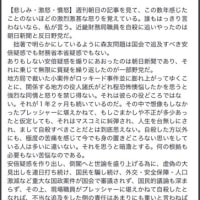
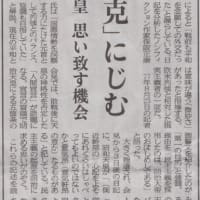
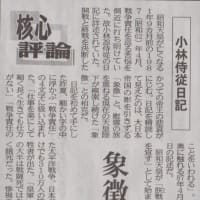
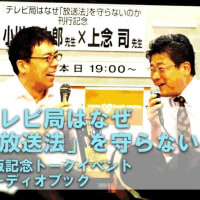

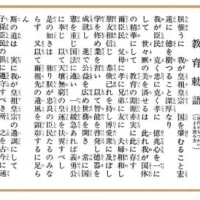



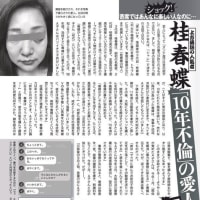
※コメント投稿者のブログIDはブログ作成者のみに通知されます